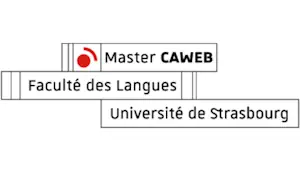Snack content: how to make a difference on social networks?

8 seconds is the average attention span of an Internet user. In an age when we’re swamped with information, snack content is the solution for many companies and organisations looking to grab attention quickly and create engagement. But what does snack content really mean, what’s the point and how do you create relevant content? In this article, I’ll tell you everything you need to know about snack content to integrate it properly into your marketing strategy.
What is snack content?
Snacking content is short, brief content that can be consumed quickly. It can take several forms:
- text: a tweet or short post
- image: a photo, a GIF, a carousel
- video: short content (5 minutes maximum), stop motion, motion design, etc.
This content is primarily intended for social networks and mobile use, in order to capture the user’s attention, create engagement and increase the visibility of the brand or company.
In comparison, long-form content will be used to feed a website or blog with the aim of ranking on search engines and generating traffic.
The power of snack content is not insignificant: with the advent of mobile phones and smartphones, we are more inclined to read a short article or watch a video on TikTok than to read a long article on a blog.
Why use snack content in marketing?
Every day, thousands of pieces of content are published on social networks, and it quickly becomes impossible to keep up and consume everything that is sent our way.
As Internet users, we prefer content that is quick and easy to consume without sustained attention, that can respond directly to our needs or that solves a problem we’ve encountered.
To stand out from its competitors, a brand needs to produce short, punchy content that will stick in the mind of the consumer, who may well share it. It’s in a brand’s best interests to produce snack content to raise its profile and visibility, and generate engagement.
If you’re interested in digital marketing, find out more about the Master CAWEB, a state diploma specialising in multilingual web communication. As well as improving your marketing skills, you’ll develop linguistic and technical skills, as well as immersing yourself in a professional environment with a second year of work-linked training, which is the strength of our course!
How do you create relevant snack content?
A good snacking content strategy consists of creating engaging, relevant content with high viral potential. Here are a few tips on how to create quality snack content:
1. Adapt your content to the target platform
Each platform has its own codes and consumption patterns. By analysing your target audience, determine which platforms they prefer and post on them. For example, you can post short videos on Instagram, Snapchat, TikTok (and on YouTube with YouTube Shorts); short articles on LinkedIn or Facebook, GIFs and memes on Twitter…
2. Create diversified content
For a successful snack content strategy, it is essential to vary the type of format so as not to bore your audience: video, Tweets, infographics, memes, etc. The possibilities are numerous. Don’t forget to include your longer content (articles, videos) in the form of snack content to attract web users and redirect them to the longer content. To find out more about memes and marketing, we also have an article on the subject!
3. Relying on current events
The snacking content strategy is closely linked to that of newsjacking, which consists of distributing a message linked to current events in order to attract attention.
Like everyone else, your target audience cares about current affairs. When a story hits the headlines, try to find something in common with your company and twist the story to link the two and make it part of your communication strategy.
4. Provoking positive emotions
Emotion is a key element in a communication strategy: we remember something better and are more likely to react to it when it provokes an emotion. So create content that is surprising, funny and unexpected. But focus your strategy on positive emotions, which will contribute to an optimistic perception of your brand!
5. Encourage action
The aim of a snack content strategy is to encourage web users to take action. If possible, think about including CTAs (Call To Action) in your content: a link to your website, to your latest article or video, etc. However, make sure that the content is appropriate and doesn’t seem too excessive in the context.
6. Create original, high-quality content
Snack content is designed to make a lasting impression, so don’t try to take inspiration from your competitors! Similarly, for successful publications, rely on well-crafted visuals, punchy text and quality photos… Because content that’s consumed quickly doesn’t mean content that’s rushed!
And there you have it, you now have the main elements for launching a snack content strategy! It’s an excellent way of standing out from your competitors and raising brand awareness, all the while using humour and originality. If you’re interested in content on TikTok, the mainstay of snack content, take a look at our article on this innovative tool for promoting your business!
Article written by Lena Camillone






